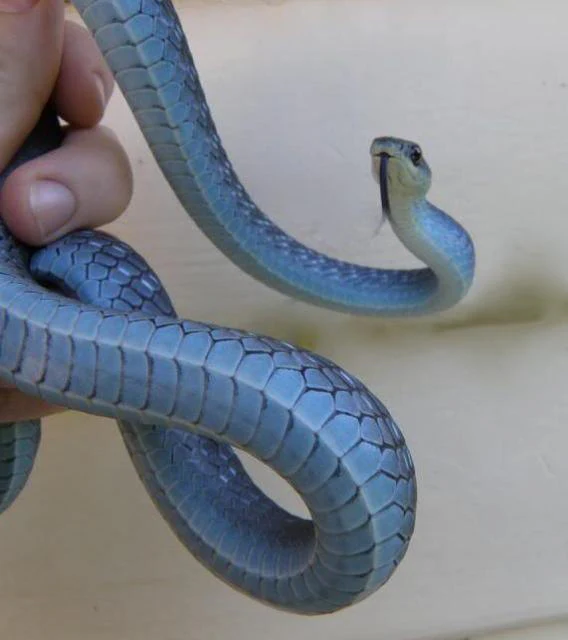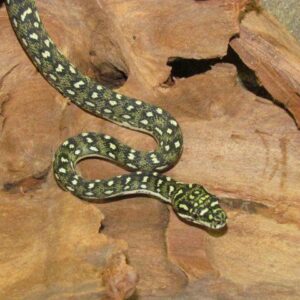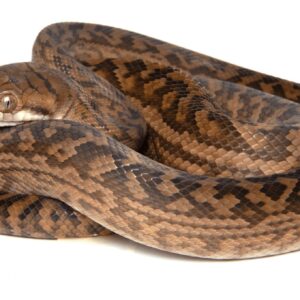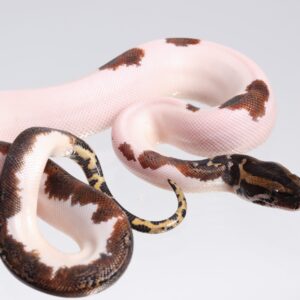Blue Phase Common Tree Snakes for sale
Blue Phase Common Tree Snakes is a visually striking variant of the Common Tree Snake (Dendrelaphis punctulatus). Here’s a detailed description of these fascinating reptiles:
Physical Description
- Coloration: The defining feature of the Blue Phase Common Tree Snake is its predominantly blue coloration. Unlike the typical green coloration of Common Tree Snakes, individuals in the blue phase display varying shades of blue, ranging from light sky blue to deep indigo. The blue coloration extends along the snake’s dorsal side, while the ventral side may remain lighter in color.
- Body Shape: They have a slender, elongated body with smooth scales, characteristic of arboreal snakes. Their body shape is optimized for climbing and swift movement through trees.
- Size: They are typically reach lengths of 1.2 to 1.8 meters (4 to 6 feet), although individual sizes may vary.
Habitat and Distribution Blue Phase Common Tree Snakes
- Habitat: They are inhabit a variety of habitats, including rainforests, woodlands, and urban gardens. They are primarily arboreal but may also be found on the ground, especially near water sources.
- Geographic Range: These snakes are native to Australia, particularly in northern and eastern regions, including Queensland, New South Wales, the Northern Territory, and Western Australia. They are also found in New Guinea.
Behavior and Diet Blue Phase Common Tree Snakes
- Behavior: They are diurnal and highly active, often seen swiftly moving through trees and shrubs in search of prey. They are known for their curious nature and agile climbing abilities.
- Diet: Their diet consists mainly of small vertebrates such as frogs, lizards, birds, and occasionally small mammals. In captivity, they can be fed appropriately sized rodents and other prey items.
Reproduction
- Breeding: Like their counterparts, They are oviparous, laying clutches of eggs in hidden, humid locations. The incubation period lasts about 60 to 70 days, after which hatchlings emerge.
- Development: Hatchlings are independent from birth and start hunting small prey soon after hatching.
Captive Care
- Enclosure: They require a tall enclosure with plenty of climbing opportunities, such as branches, perches, and foliage. The enclosure should also provide hiding spots and areas for basking.
- Temperature and Humidity: They thrive in temperatures ranging from 24-30°C (75-86°F) with a basking spot around 32°C (90°F). Humidity levels should be maintained at 50-70%, with regular misting to ensure proper hydration.
- Feeding: In captivity, they are typically fed a diet of appropriately sized rodents, supplemented with occasional prey items like frogs or lizards. Juveniles should be fed every 5-7 days, while adults can be fed every 10-14 days.
Conservation
- Status: they are not currently listed as threatened or endangered. They are relatively common within their range and adapt well to various environments.
- Threats: Major threats include habitat destruction and fragmentation. However, they are resilient and can often thrive in suburban and urban areas.
Purchasing Considerations
- Source: It is important to purchase them from reputable breeders or specialized reptile stores to ensure you are getting a healthy, captive-bred animal.
- Health: Look for signs of good health, such as clear eyes, smooth scales, and an active demeanor. Avoid snakes with signs of respiratory issues, mites, or other health problems.
They are a visually stunning and captivating addition to any reptile collection. With proper care and attention to their specific needs, they can thrive in captivity and provide years of enjoyment for their keepers.





